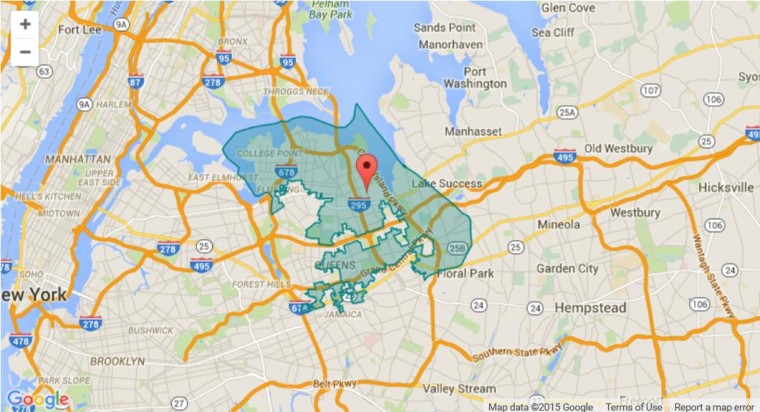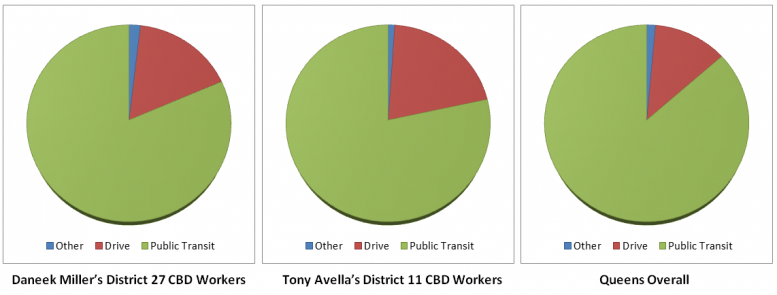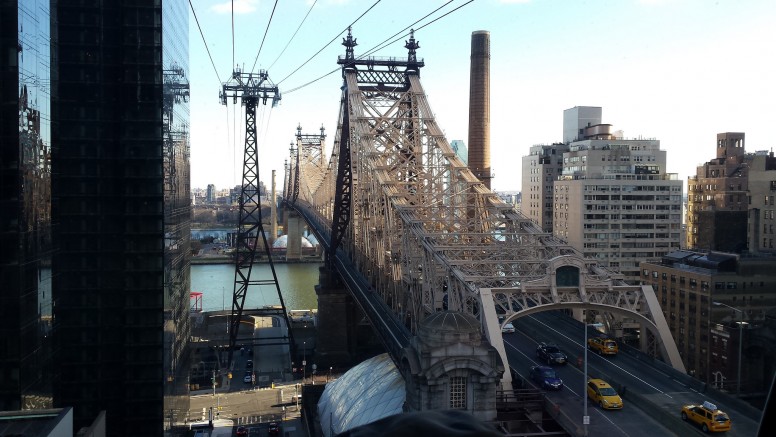Last week we looked at how the Move New York Fair Plan would impact commuters in New York City Councilmember I. Daneek Miller’s southeastern Queens district. This week, we’re turning our attention toward New York State Senator Tony Avella’s district in northeastern Queens to further highlight the importance of public transit to Queens as a whole.
Senator Avella, who represents Senatorial District 11, has been a long-standing opponent to Move NY. Back in April, Avella issued a joint statement with several Queens elected officials, calling the plan “fundamentally unfair” to residents “who live in the transit desert of Queens.” In a more recent statement, Avella said that introducing Move NY to relieve traffic congestion “is akin to snuffing a fire by adding kerosene” and reinforced the notion that Queens residents would be unfairly burdened since they use East River bridges out of “necessity.”
Like Councilman Miller, Senator Avella and other Queens elected officials neglect to consider just how many of their constituents rely on transit. There are parts of Queens which certainly have less transit and longer commute times relative to the rest of the city, but calling a borough with 39 local and 22 express bus routes, 78 stations on 12 subway lines and 24 stations on six different Long Island Rail Road lines a “transit desert” is a bit of a stretch.
Queens leaders continue to overestimate not just how their constituents would be affected by Move NY but also how few of them drive into the Manhattan central business district (below 59th Street) on a regular basis.

Less than a quarter of the 203,000 workers in Senator Avella’s district work in the Manhattan CBD (48,873). Among those workers, 81.5 percent (38,814) ride transit while 16.7 percent (10,036) drive–a nearly identical breakdown as Councilman Miller’s district. Those 10,036 who drive into the CBD represent just under 5 percent of all commuters within Avella’s district, whereas those who commute via transit riders to the CBD account for 19 percent. So if the East River bridges are a “necessity” to Avella’s constituents, what does that make transit?
The statistics for Miller and Avella’s districts are also consistent with the borough overall. Queens residents rely more heavily on transit than cars to get into the CBD than electeds seem to realize. There are roughly 1,031,130 workers who live in Queens, and 305,265 (29.6 percent) of them commute into the Manhattan CBD. Of those CBD-bound commuters, the vast majority (264,051, 86.5 percent) ride transit while only 12.1 percent (36,905) drive. Of all Queens workers, the group that commutes via transit into the Manhattan CBD represents 25.6 percent, while the group that drives to work in the Manhattan CBD represents just 3.6 percent.

While Miller and Avella have called for improved transit in their respective districts, they are not the only Queens electeds to perpetuate misconceptions about how Move NY will affect the everyday New Yorker.
Councilman Rory Lancman (who represents District 24) said Move NY would keep “the common folk out of central Manhattan by financially squeezing them out of their cars.” But does he realize that people who commute to Manhattan via car aren’t even that common? Four out of every five commuters entering the CBD during rush hour arrives on a bus or a train, and two out of three households making less than $40,000 a year in New York City don’t even have access to a vehicle.
Lancman and State Senator Joe Addabbo (of senatorial district 15) both claimed the toll reform would worsen traffic in Western Queens and north of the Manhattan CBD. By charging tolls on the (currently toll-free) East River bridges, Move NY would actually alleviate gridlock by discouraging toll-shopping.
Queens electeds who are opposed Move NY should provide evidence that the plan would disproportionately burden a plurality of their constituents. Perhaps the reason they haven’t is because that evidence simply doesn’t exist.
TSTC Staff Analyst Ryan Hall also contributed to this post.


Of the people in those districts who don’t work in the Manhattan CBD, what percentage take transit to work? What percentage commute through Manhattan to New Jersey (I would assume minute)?
[…] On East River Bridge Tolls, Eastern Queens Electeds Pander to a Privileged Few (MTR) […]
Everyone except a few politicians already knows this, and I suspect that it will take more than a well-reasoned article to get their attention.
Get to the CBD? I wouldn’t start from here.
[…] misconceptions have resulted in Queens elected officials coming out against the plan. Then, in Part II, we dug a little deeper to show how opposition to Move NY is rooted in basic misconceptions about […]
People are not stupid, tolls are tolls, they don’t go away and they only increase. It will expand to screw people on weekends when they do indeed drive into Manhattan. Queens is not well served by public transportation and messing with Queens motorists hurt working families. Taking the train with a family of four or five is not cheap or convenient–didn’t think of that, did you? A car is much cheaper and convenient–especially if you have a life outside of the five boroughs, which many Queens residents do.
[…] safe streets and reduced congestion is progressive, not regressive, policy — We’ve called out a few NYC electeds who have come out against Move NY, but there are many, many more who are […]
[…] This line of attack cleverly sidesteps the issue of who would actually pay the new tolls and shifts into a debate about the quality of transit in Queens. Don’t fall for it. Far less than “half the borough” is driving to work in the Manhattan central business district. Take it away, Tri-State Transportation Campaign: […]
[…] extra for Express Bus service or LIRR service. As Tristate Transportation Campaign calculated in November, the overwhelming majority of Queens commuters rely on mass […]